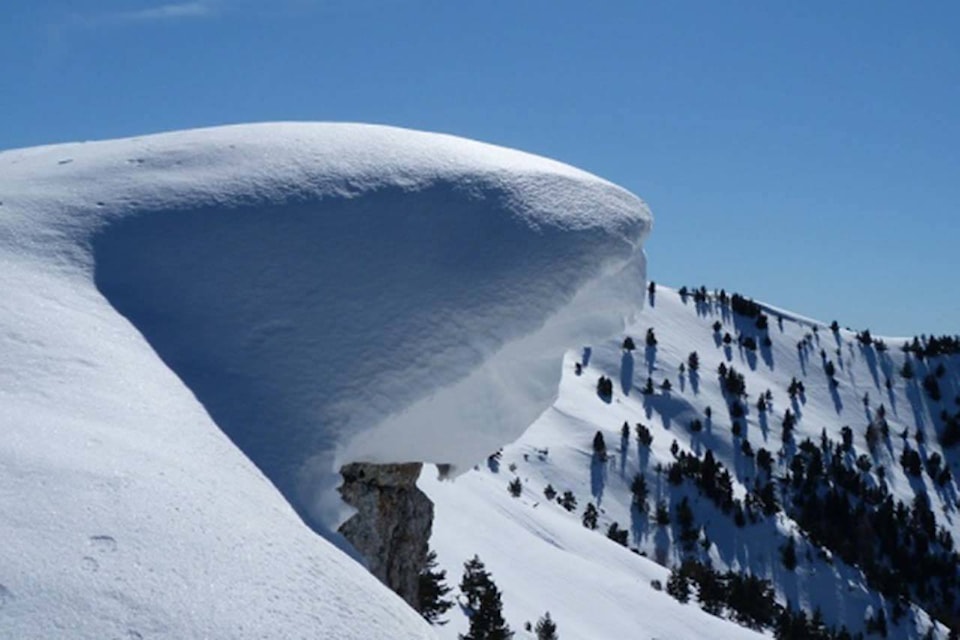The mountains near Hope are a little less dangerous than those in the Interior as far as avalanches are concerned, according to Kelly Pearce, program director for the Hope Mountain Centre, but that doesn’t mean for a moment that the risk doesn’t exist.
In 2014, three skiers narrowly escaped death as they were caught in an avalanche near Needle Peak, off the Coquihalla Highway, near Hope. One skier suffered severe head and facial injuries despite the fact they were all wearing avalanche balloons designed to keep skiers above the snow in an avalanche. They also had GPS units and were able to call for help on cellphones.
Even so, rescuers had to be lowered in by helicopter and, at the time, said that the trio was lucky to escape with their lives.
“We’ve had other close calls with people on Ski-Doos or out on cross country skis and snowshoes,” Pearce said.
“It’s why we’re offering the Avalanche Safety Course in December. People heading into the backcountry should know the risks and what they can do to protect themselves. It’s really a matter of life and death.”
The course will be taught by avalanche experts Brad Harrison of ColWest Alpine Adventures and Terry Palechuk, mountain and ski guide instructor at Thompson Rivers University. The training course, entitled Avalanche Skills Training Level 1, is certified by Avalanche Canada and will take place on Friday, Dec.1 from 7 p.m. to 10 p.m. and two all-day sessions on Saturday and Sunday (Dec. 2 and 3).
The course focuses on understanding, recognizing and avoiding avalanche hazards and includes training on terrain recognition, basic snow pack structure, weather, safe route finding and avalanche rescue techniques.
“This is a course that’s recommended for any backcountry recreationalist,” Pearce said.
“In the course, you learn about snow conditions and how to recognize how snow doesn’t bond sometimes. You can get a light rain or melt that freezes into ice and then snow falls on top of it but doesn’t bond to the layer below. It’s a slide waiting to happen in the right terrain, and it can sit there for a long time, just waiting until the conditions are just right and then it’ll slide without warning.”
Pearce described how, as part of the course, students learn how to dig a snow pit, looking for those weakly bonded layers.
“It’s almost like an archaeological dig where the story is told in the layers below what you can see on the surface,” he said.
Learning to read the terrain is just as important as reading the snow-pack. The north side of a mountain reacts differently than the south side and even small scale features like gullies, bowls and convex geographical features play into assessing avalanche risk.
“There’s a nasty side to the mountains, ” said Ilya Storm of Avalanche Canada in a recent interview with CBC.
According to figures provided by Avalanche Canada, an average of 23 people are lost or killed during winter activities in B.C.’s backcountry. Last year, 27 people died, the highest number since 2009/2010.
“It’s been said that ignorance is bliss but in the case of backcountry mountain activities, that ignorance can end in tragedy,” said La Vern Klassen, program assistant with the Hope Mountain Centre.
And although the centre’s avalanche training course is full with a waiting list, Klassen urges backcountry enthusiasts to seek out other courses, even if they have to travel to another location to get the training.
Klassen suggests that people looking for other courses in the area visit the following websites: colwest.ca/caa-ast-level-1 or mtwaddingtons.com/courses-guiding
